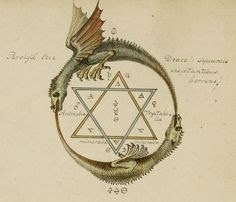Philosophical Imaginatrix: The Brahma Sutras
अथातो ब्रह्मजिज्ञासा
The vedic texts can be divided into three parts. Which are the Karma Kanda, Upasana Kanda and Gyan Kanda. The Karma Kanda deals with ceremonial rites or sacrifice rites, this represents the feet of the man. The Upasana Kanda deals with worship, this represents the heart of the man. And the Gyan Kanda deals with the knowledge of the Brahman, this represents the head of the man. Brahma Sutra represents Gyan Kanda. Its also called the Vedanta Sutra or the Sariraka Mimamsa. Brahma sutra deals with various topics, which falls under:
1. Vishaya: Thesis
2. Samasya: Doubt
3. Purva Paksha: Anti-Thesis
4. Siddhanta: The right synthesis/ right conclusion
5. Sangati: Collective agreement
The book exclusively discusses about the Brahman. The Brahma Sutras are for those who with their genuineness want to know about the knowledge of the Brahman. The sutras explain that origination of world comes from the Brahman. And Brahman is the only source of the Vedas. To understand the Brahman, one must study sruti. The sutra explains that all the Vedanta texts are nothing but the process of understanding the Brahman. Brahman Sutras provides arguments and understanding about how Brahman is an intelligent principle. We can look at the Brahman as a sentient Pradhana, and through the sentient Pradhana the world originates. This is also the theme of Samkhya. Its shows that it's not the gods, but the universe who is intelligent in its core. The sutras question what does it mean by 'Anandamaya' which is mentioned in Taittiriya Upanishad. It Anandamaya, the state of Divided Souls (jivas) or the Supreme Self. Anandamaya (Pure Complete Bliss) is the characteristics of the Brahman. The sutra explain that it's the state only of the Brahman. All the chapters of Brahma sutra likewise deals with the core concepts of Brahman.
Sutras are the aphorisms to understand life, and we must understand it that way. They are essence of the beautiful realm. A huge understanding is condensed in few verse of the Brahma Sutra. A reader or the seeker must meditate in each sutra. It's not a random reading process, but a collective evolution along every word and line.
Brahman is without character and with character. Character with attributes. Brahman is with qualities, which makes it the Universe. We must understand Brahman is not just the universe. It's the roots and the flower. And the fruit. And the one who eats it. And the one who digests it. And everything beyond. The chit and achit, the matter and soul, both are the forms of Brahman. It can also be put that chit and achit is the physical body of the Brahman, and the inner ruler (the anterman) is also the Brahman. The Brahman goes on a process of Contraction and Elongation, and the cycle continues. Brahman is the illusion and it's the illumination. Brahman must be understood in degrees of understanding. And there comes point when even those degrees wont work. And indefinable sense of Brahman comes out. The Brahman is who is the Sat Chit Ananda. The Sat Chit Ananda is of absolute homogeneous nature. But because because Brahman is of illusory power, we see it in degrees. We cannot define it in terms of Sat or Asat, right or wrong. Hence the sense ruled reality of man is unreal. And because its illusory, the world is in constant modification. One clings in the modifying world because of Avidya. But man has the capacity of Vidya. Hence he can know the Sat Chit Ananda form of the Brahman.
When man looks at himself truly as the Brahman, he sees the illusion. He becomes the doer, the actor, the doing and the done. He enjoys this play. He plays the play as a watcher. This is the play of Brahman with form (the Saguna Brahman). Once man sees the true play. And comes out of that matrix. He becomes the Nirguna Brahman. The cycle of maya, hence ends. To experience the Nirguna Brahman is to become liberated. Sri Shankar calls the final transcendence as the 'Nirvisesha Brahman', the impersonal absolute. The stage of Nirvana.
We can get anything out of the Brahma Sutras. A seeker with non dual attitude finds non duality in the sutra. A romantic seeker finds romance. The seeker with dual attitude finds duality. A monotheist finds monotheism. A pagan seeker find pagan. But everyone might see it differently but would reach to the same conclusion. The seeking of the final Nirvisesha Brahman. The goal for all is to reach the state of impersonal absolute. Mandukya Upanishad beautifully explains that, one who knows the Brahman becomes the Brahman. The illusory mind must understand that Brahman cannot be categorized by the means of mind, it is not the object of knowing. Brahman is different from known, and it's beyond unknown.
Swami Sivananda explains:
Swami Sivananda explains:
You will find in many places in the Upanishads that Brahman is described apparently with qualifying adjuncts. The Srutis say that the knowledge of that Brahman leads to instantaneous release (Sadyo-Mukti). Worship of Brahman as limited by those adjuncts cannot lead to immediate emancipation. But if these qualifying adjuncts are considered as not being ultimately arrived at by the passages but used merely as indicative of Brahman then these passages would refer to the Nirguna Brahman and the final emancipation would result from knowing that Brahman. Therefore you will have to find out the true significance of the passages through careful enquiry and reasoning.
To the un-united unity of union. To the one and none.



Comments